This NO PREP/NO PLANNING/NO PAPER resource is affordable and ready to go! But, I’m happy to share my strategies and sequence below for free.
THESIS STATEMENT
It is important to develop the thesis statement first so that students can center the entire essay upon the claim and reasons of this statement. It is up to you if you want your students to choose their own topic, choose from a list of approved topics, or if you want to assign the topics. Students will research and a main claim for their argument and will decide up the strongest reasons that will support that claim. How many reasons? This depends on how long you would like their essays to be. I like to use a vertical alignment method for middle school students. Students will provide 1 reason for each body paragraph.
VERTICALLY ALIGNED ESSAYS FOR MIDDLE SCHOOL 6TH-8TH
- 6th grade = 3 paragraph essay/ 1-prong thesis statement (Topic+Claim+1 Reason)
- 7th grade = 4 paragraph essay/ 2-prong thesis statement (Topic+Claim+2 Reasons)
- 8th grade = 5 paragraph essay/ 3-prong thesis statement (Topic+Claim+3 Reasons)
THESIS-CENTERED HOOK
Students will take a big idea from the REASONS of their thesis and think of something interesting to say about it. There are several hook methods, but that’s for another blog. It’s that simple. Here’s an example. Let’s say the thesis is this:
THESIS: Schools should require students to wear uniforms because they help reduce discipline, are more affordable than brand clothing, and create a sense of school pride.
Of those three reasons, I’m going to create a hook centered around the big idea of discipline, and I’m going to use the startling statistic method.
HOOK: Of the 49 million students enrolled in public schools in 2011-2012, 3.5 million were suspended in-school, 3.45 million students were suspended out-of-school, and 130,000 students were expelled. Something is very wrong in public schools!
THESIS-CENTERED BACKGROUND INFORMATION
Next, students will need some background information concerning the topic of their thesis. Here are some questions that will guide students to include the right kind of information in their introductory paragraph. It is important that students keep the background information general, not specific evidence or details. Note: not all of these questions will apply to every thesis.
What is the significance of the topic? Who is mostly affected? When and/or where does it occur? What factors cause and/or affect it? Answering a few of these questions should provide plenty of background information and will keep students tightly centered on their thesis.
COUNTERCLAIM AND REBUTTAL (aka Counterargument)
COUNTERCLAIM aka COUNTERARGUMENT is the part of an essay where the writers acknowledges an discredits the main opposing claim. To discredit the claim, students will write a REBUTTAL, which is a statement or two about why the opposing claim is wrong. This is a powerful element of argument because it shows the writer has well-researched knowledge of multiple perspectives, and it gives the writer an advantage of sewing seeds of doubt into the opposing argument. The big question is where to place it in an essay.
Placement of the counterclaim is a controversial topic even amongst educators and writers. There isn’t a right or wrong answer; it’s a matter of style and preference. On one hand, introducing a counterclaim early in the essay is powerful. The writer acknowledges the opponent’s claim and refutes it immediately. On the other hand, writing a stand-alone counterclaim paragraph allows the writer to provide a more in-depth counterargument with examples and strong reasons. Therefore, this workshop includes both options. I typically instruct my struggling writers to use the inclusive method, and expect advanced writers to construct the full paragraph.
THESIS-CENTERED TOPIC SENTENCES
Students will create topic sentences using the reasons from their thesis statement. This will ensure that their entire essay is tightly focused around the topic and claim.
Here’s an example: THESIS: Schools should require students to wear uniforms because they help reduce discipline, are more affordable than brand clothing, and create a sense of school pride.
Using the reason, “uniforms help reduce discipline” here is a possible topic sentence: “All across America students are getting into trouble at alarming rates.” *Notice, I did not use the same key words. Instead of re-using the term “discipline,” I used the phrase “students are getting in trouble.” This is a great time to teach students to replace key words by using a thesaurus so that topic sentences are freshly worded, but closely related.
THESIS-CENTERED EVIDENCE AND ELABORATION
This one is easy and goes without saying. Each paragraph should provide evidence that supports one of the reasons in the thesis. The heavy task of this section is teaching students to find the strongest and most relevant evidence. This is a great opportunity for personal conferences with each student. I also ask them to sum up their evidence and tell me why they chose each piece and if they believe this is the most convincing evidence available.
THESIS-CENTERED CONCLUSION
This paragraph sums up the information from the introduction and body paragraphs. There are easy strategies to make sure it is fresh and thesis centered. In no particular order, students will restate the thesis in a fresh way that signals an exit from the essay, make a final appeal to the audience as to why this topic is so important, detrimental, concerning, etc., and possibly pose a solution or call to action if the essay lends itself to this.
This highly scaffolded, thesis-centered, argumentative workshop guides students through each of the processes outlined above. It includes instructions, tutorial videos for each section, examples, and space for students to build their essays piece by piece, directly on the slides. Printable version, specifically designed for paper is available.
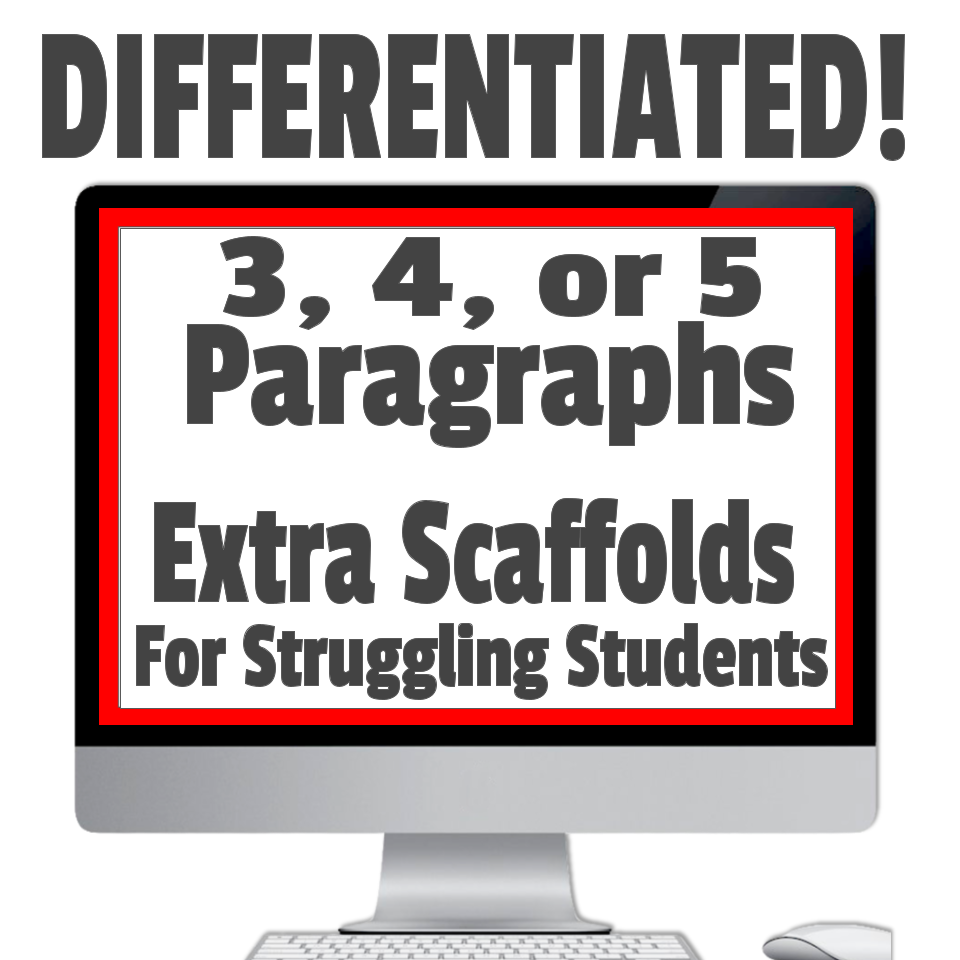
If your students need extra practice with writing thesis statements, here’s a tried and true workshop! VIEW ON TPT

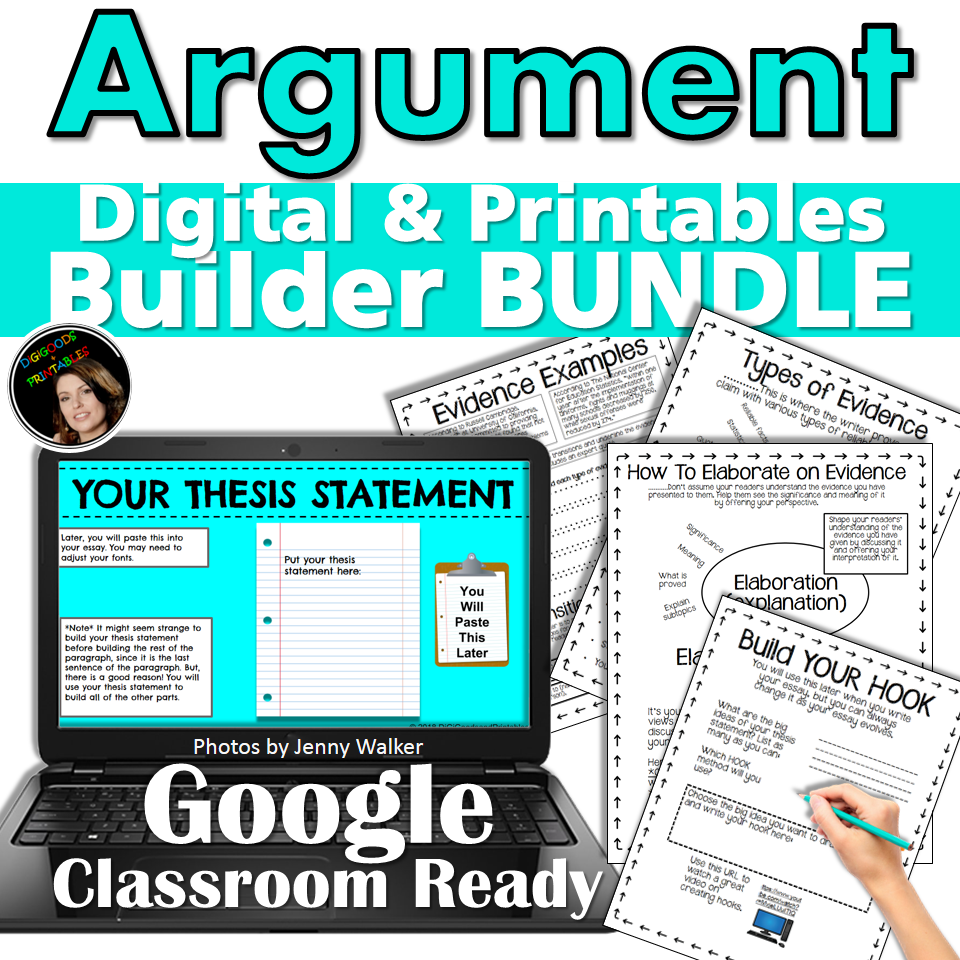

Check Out INFORMATIVE Writing Workshops!
Differentiate With Modified Workshops. Meet students at their level.
4 Paragraph Workshop With Thesis Statement Workshop

5 Paragraph Essay Workshop With Thesis Statement Workshop

4 & 5 Paragraph Essay Bundle With Thesis Statement Workshop

CLICK TO VIEW A FULL YEAR OF WRITING WORKSHOPS AND TOOLS
(each workshop also sold separately)


NOTE: These workshops can be used for grades 6th – 12th.
Thesis statement is typically introduced in 6th grade.
Counterclaim is typically introduced in 8th grade.
You can eliminate any element that is not relevant to your students or standards and use only what you need. Since these elements are common to all essays, higher level students will be able to build greater complexity through content, word choose, and sentence structures.

FOLLOW DIGIGOODS FOR 50% OFF NEW PRODUCT ALERTS AND SALES!
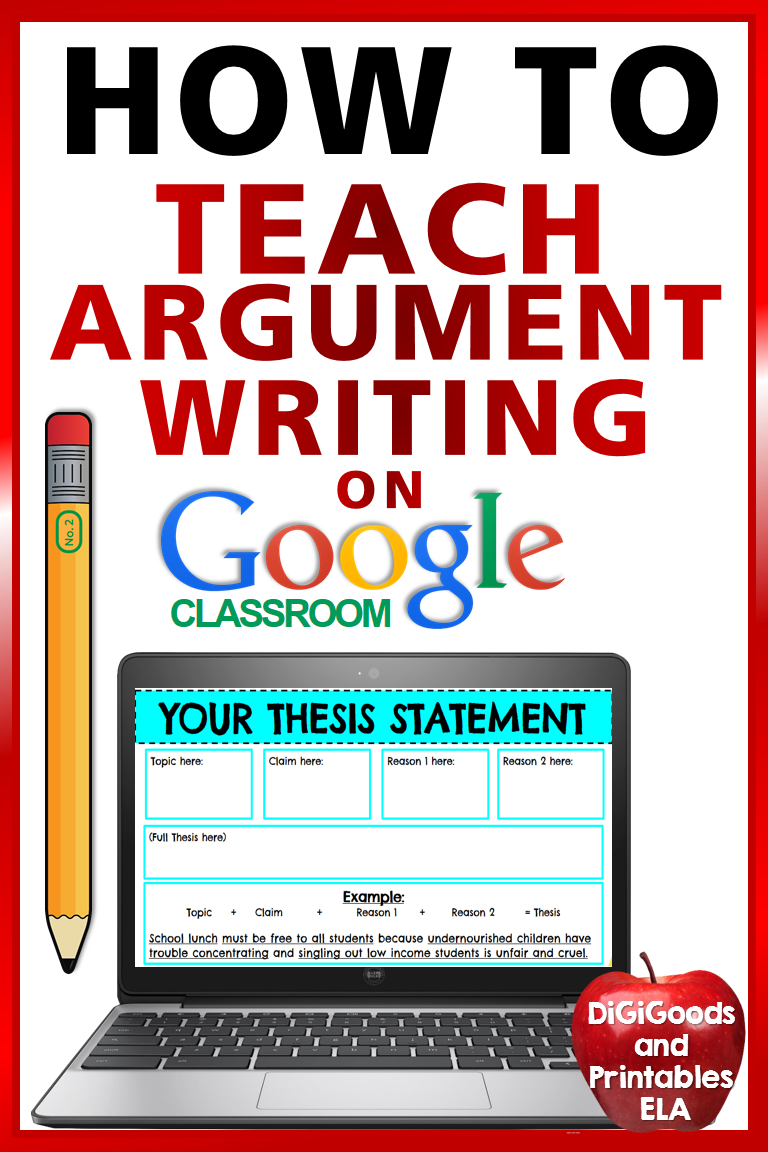
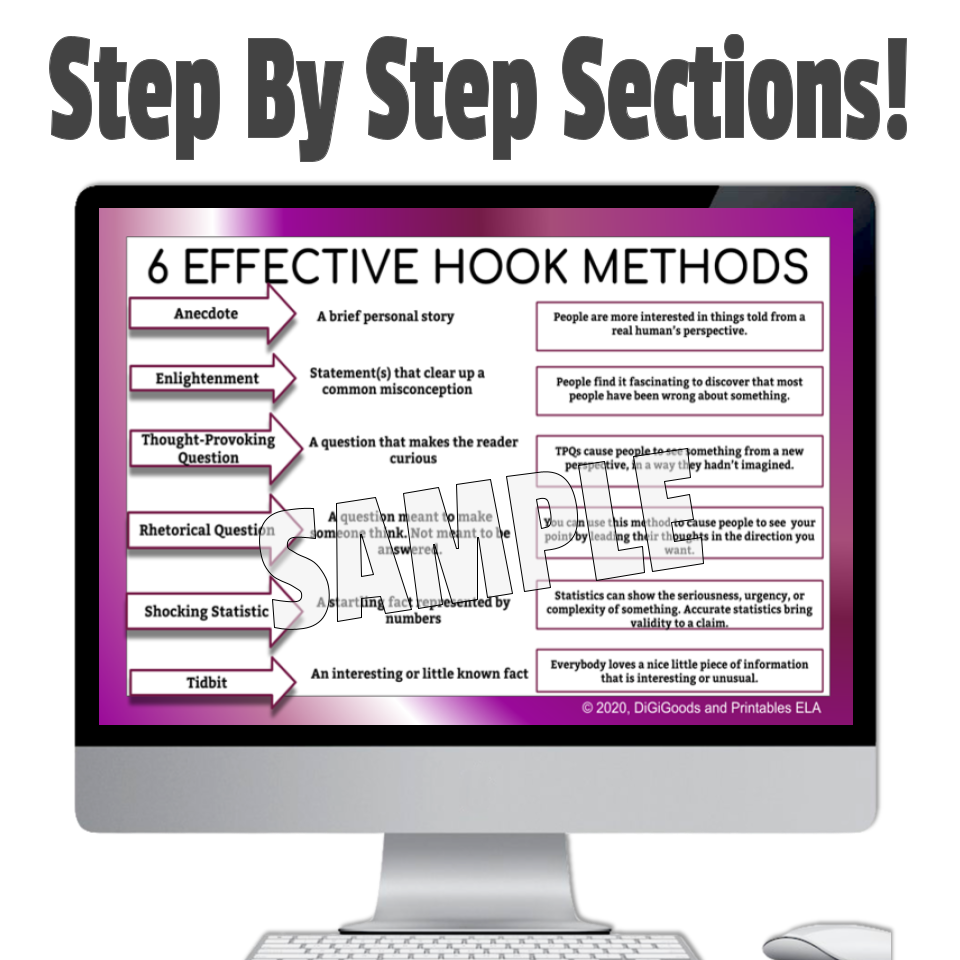



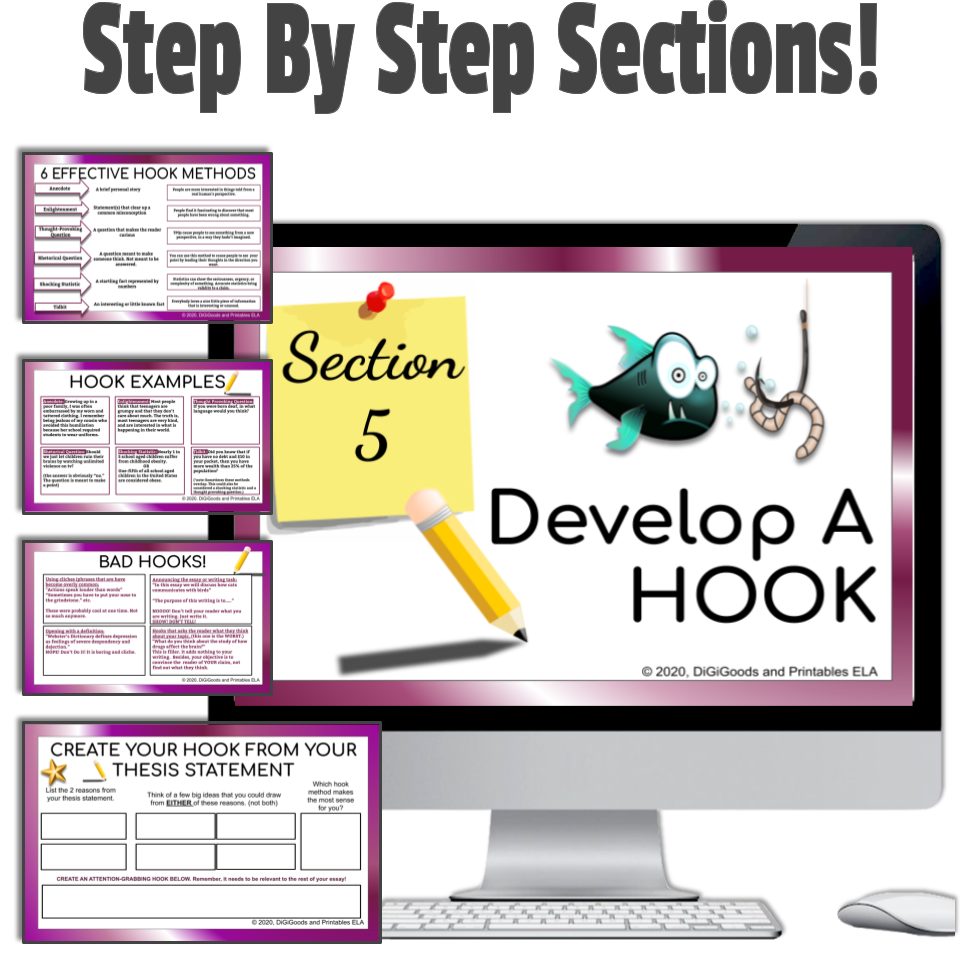


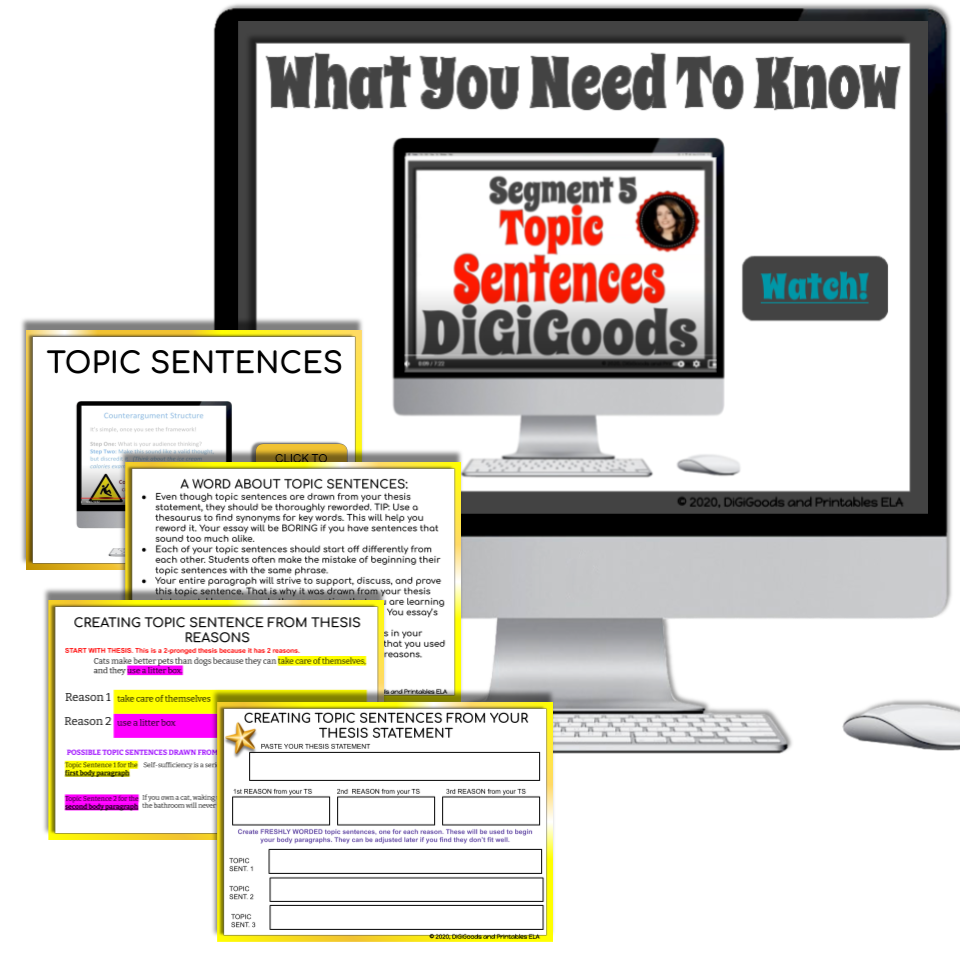


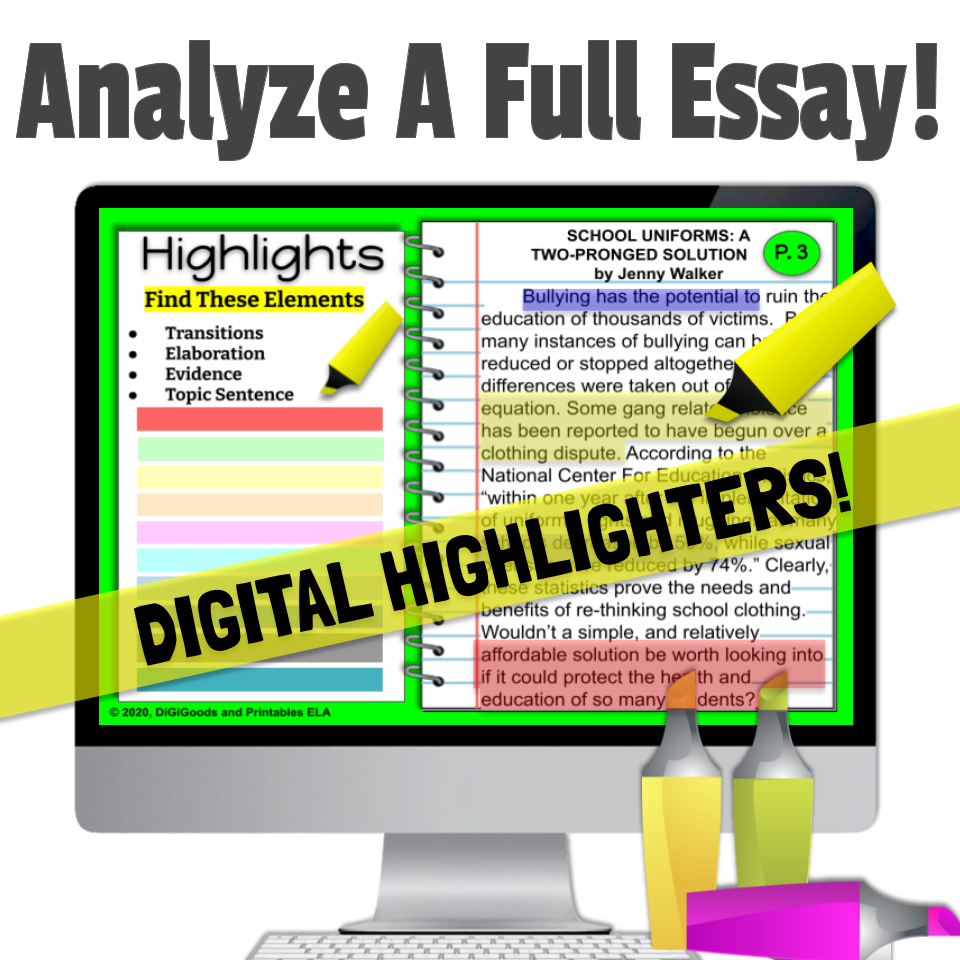



Leave a Reply